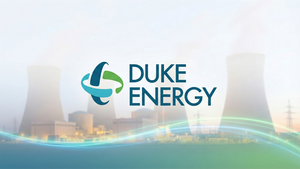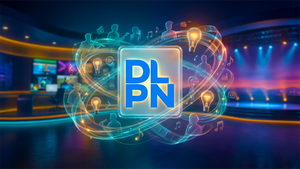- Announcement Follows First Cases of BA.2 Identified in New York State Where the Majority of COVID-19 Testing Clients Reside -
- Linea 1.0 Assay’s Unique Double S-gene Target Design Likely Allows for the Identification of Samples that Contain a Mutation Profile Indicative of BA.2 -
Applied DNA Sciences, Inc. (NASDAQ: APDN) (the “Company”), a leader in Polymerase Chain Reaction (PCR)-based DNA manufacturing and nucleic acid-based technologies, announced today that its wholly-owned clinical laboratory subsidiary, Applied DNA Clinical Labs, LLC (ADCL), intends to deploy its Linea™ 1.0 COVID-19 Assay (the “Linea 1.0 Assay” or the “Assay”), part of ADCL’s Linea COVID-19 diagnostics and testing portfolio, for the rapid detection of samples containing a mutation profile that is indicative of the BA.2 subvariant (BA.2) of Omicron in COVID-19-positive samples.
ADCL believes the Linea 1.0 Assay has clinical utility as a genomic surveillance solution to enable public health authorities to detect and assess BA.2 spread via the reflex testing of COVID-19 positive samples with the Linea 1.0 Assay. When used as a reflex test, the Company believes the Linea 1.0 Assay allows for the rapid and inexpensive identification of positive COVID-19 samples that are indicative of BA.2 relative to costly and time-consuming next-generation sequencing.
First identified in November 2021, BA.2 is a descendant of the Omicron variant (BA.1) but differs in some of its genetic traits, including certain mutations in the spike protein, which may make it somewhat harder to detect via S-gene target failure (“SGTF") on certain third-party assays. SGTF was used globally to track the spread and prevalence of the Omicron variant (BA.1). In silico analysis of the BA.2 subvariant conducted by ADCL indicates that BA.2 will likely result in a unique detection signature on the Linea 1.0 Assay that is distinct from BA.1 and other currently circulating SARS-CoV-2 variants of concern and/or interest. The Linea 1.0 Assay’s ability to identify samples containing a mutation profile indicative of BA.2 via SGTF is possible due to the Assay’s unique double S-gene target design.
BA.2 has been identified in nearly 50 countries, including the U.S., U.K., Israel, and Denmark, where the subvariant accounts for almost half of Omicron cases. According to Denmark’s Statens Serum Institute, the country's top infectious disease authority, “preliminary calculations suggest BA.2 could be 1.5 times more infectious than BA.1.” On January 27, 2022, the New York State Health Department, the State in which most ADCL’s COVID-19 testing clients reside, confirmed its first cases of BA.2. The subvariant has been sequenced in at least 20 States.
“Deploying Linea 1.0 Assay towards BA.2 potentially positions ADCL for incremental testing demand while also offering clinical utility to epidemiologists presently analyzing BA.2 to determine its characteristics and their clinical significance to understand better how the subvariant might shape the nation’s pandemic response going forward. As a result of the Assay’s double S-gene target design, we believe public health officials can be ahead of the curve in case of BA.2 prevalence,” stated Dr. James A. Hayward, president and CEO of Applied DNA.
About Applied DNA Sciences
Applied DNA is commercializing LinearDNA™, its proprietary, large-scale polymerase chain reaction (“PCR”)-based manufacturing platform that allows for the large-scale production of specific DNA sequences.
The LinearDNA platform has utility in the nucleic acid-based in vitro diagnostics and preclinical nucleic acid-based drug development and manufacturing market. The platform is used to manufacture DNA for customers as components of in vitro diagnostic tests and for preclinical nucleic acid-based drug development in the fields of adoptive cell therapies (CAR T and TCR therapies), DNA vaccines (anti-viral and cancer), RNA therapies, clustered regularly interspaced short palindromic repeats (CRISPR) based therapies, and gene therapies.
The LinearDNA platform also has non-biologic applications, such as supply chain security, anti-counterfeiting and anti-theft technology. Key end-markets include textiles, pharmaceuticals and nutraceuticals, and cannabis, among others.
Leveraging its deep expertise in nucleic acid-based technologies, the Company has also established safeCircle™, a high-throughput turnkey solution for population-scale COVID-19 testing. safeCircle is designed to look for infection within defined populations or communities utilizing high throughput testing methodologies that increase testing efficiencies and provide for rapid turn-around-times.
Visit adnas.com for more information. Follow us on Twitter and LinkedIn. Join our mailing list.
The Company’s common stock is listed on NASDAQ under ticker symbol ‘APDN,’ and its publicly traded warrants are listed on OTC under ticker symbol ‘APPDW.’
Applied DNA is a member of the Russell Microcap® Index.
Forward-Looking Statements
The statements made by Applied DNA in this press release may be “forward-looking” in nature within the meaning of Section 27A of the Securities Act of 1933, Section 21E of the Securities Exchange Act of 1934 and the Private Securities Litigation Reform Act of 1995. Forward-looking statements describe Applied DNA’s future plans, projections, strategies, and expectations, and are based on assumptions and involve a number of risks and uncertainties, many of which are beyond the control of Applied DNA. Actual results could differ materially from those projected due to its history of net losses, limited financial resources, limited market acceptance, the possibility that Applied DNA’s assay kits or testing services could become obsolete or have its utility diminished and the unknown amount of revenues and profits that will results from Applied DNA’s testing contracts. Further, the uncertainties inherent in research and development, future data and analysis, including whether any of Applied DNA’s or its partner’s future diagnostic candidates will advance further in the research process or receiving authorization, clearance or approval from the FDA, equivalent foreign regulatory agencies and/or the New York State Department of Health (NYSDOH), and whether and when, if at all, they will receive final authorization, clearance or approval from the FDA, equivalent foreign regulatory agencies and/or NYSDOH, the unknown outcome of any applications or requests to FDA, equivalent foreign regulatory agencies and/or the NYSDOH, the unknown limited duration of any EUAs from the FDA, changes in guidance promulgated by the CDC, FDA, CMS an/or NYSDOH relating to COVID-19 testing, whether and when, if at all, the FDA will review any EUA request, disruptions in the supply of raw materials and supplies, continued mutations of the SARS-CoV-2 virus, and various other factors detailed from time to time in Applied DNA’s SEC reports and filings, including our Annual Report on Form 10-K filed on December 9, 2021, and other reports we file with the SEC, which are available at www.sec.gov. Applied DNA undertakes no obligation to update publicly any forward-looking statements to reflect new information, events or circumstances after the date hereof or to reflect the occurrence of unanticipated events, unless otherwise required by law.
View source version on businesswire.com: https://www.businesswire.com/news/home/20220128005373/en/
Contacts
Investor Relations Contact: Sanjay M. Hurry, 917-733-5573, sanjay.hurry@adnas.com
safeCircle Program Manager: Mike Munzer, 631-240-8814, mike.munzer@adnas.com
Web: www.adnas.com
Twitter: @APDN





